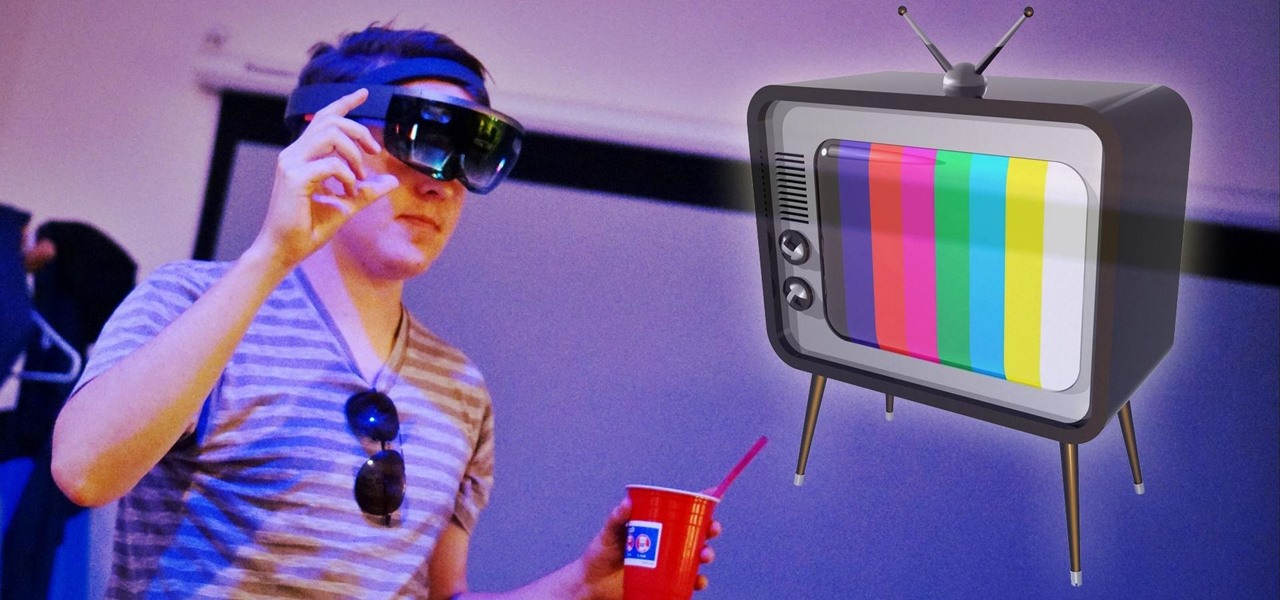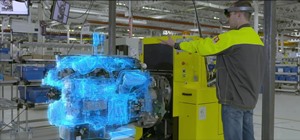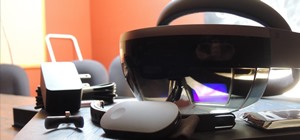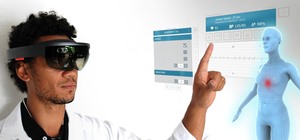Are there any benefits to watching a movie in a holographic mixed reality headset, or should you just stick with your TV? It's not as cut and dried as you might think. While TVs have some advantages, so does the virtual screen of a Microsoft HoloLens.
As augmented reality technologies become a major part of our world, they could change how we interact with screens of all types, from doing work to just watching TV.
While it'd be silly to buy an expensive and robust device like this for a passive viewing experience, that doesn't detract from the benefits of a highly portable TV you can place anywhere in the room.
Check out what it's like in the video below:
Television sets have a few distinct advantages over a headset. You don't have to wear them, they're not putting weight on your face, you can get a large screen for far less, they can connect to a variety of devices, and don't really have a lot of downsides. TV viewing pretty much works, so is there any reason you'd turn yours off in favor of a headset?
In most cases, no. Most of us watch TV on the couch and take no issue with an immobile, large screen. We put it where we want it and have a suitable viewing experience. When you're watching 2D video, your TV doesn't really need a holographic upgrade. Most of the time you'd probably opt for the "old-fashioned" method of viewing.
But that doesn't mean the HoloLens doesn't offer a worthwhile viewing experience of its own that might entice you in certain situations. With indoor lighting, you can put a holographic video screen anywhere you want. You can move it if you feel like shifting positions and the screen isn't easy to see. The spatial sound from the headset makes the viewing experience private enough that you could probably watch in bed without waking up your partner.
If you want to watch a quick video while working—whether that's part of your job or not—you can just throw it up next to an Excel spreadsheet without cluttering up your screen. In that sense, the headset can double as a computer and a television set. These are just a few scenarios in which you might find watching TV and movies in a holographic world the more compelling option. Sometimes it can be better, sometimes not.
One big problem? Currently, we can't share this experience with anyone else. If you are sitting on the couch beside someone, they're not seeing what you are seeing. Right now it's basically impossible to watch a movie with someone in augmented reality.
In the future, though, Microsoft wants its Windows Holographic platform to run on any and all AR and VR devices, which will make shared experiences—whether it's collaborating on a project or watching a movie together—a greater possibility.
Of course, none of these current or future benefits justify purchasing a HoloLens Developer Kit for $3,000 just to watch TV, but they indicate something more important. You'll find a handful of apps and features on the device that seem like compulsory additions because we've come to expect them on our computers and smartphones, but that's not cause to ignore them.
Even apps that do nothing different from their 2D counterparts have merit because of their new environmental context. The way the holographic operating system works changes how you use software, and that in and of itself can make many experiences more compelling.
Just updated your iPhone? You'll find new emoji, enhanced security, podcast transcripts, Apple Cash virtual numbers, and other useful features. There are even new additions hidden within Safari. Find out what's new and changed on your iPhone with the iOS 17.4 update.























Be the First to Comment
Share Your Thoughts